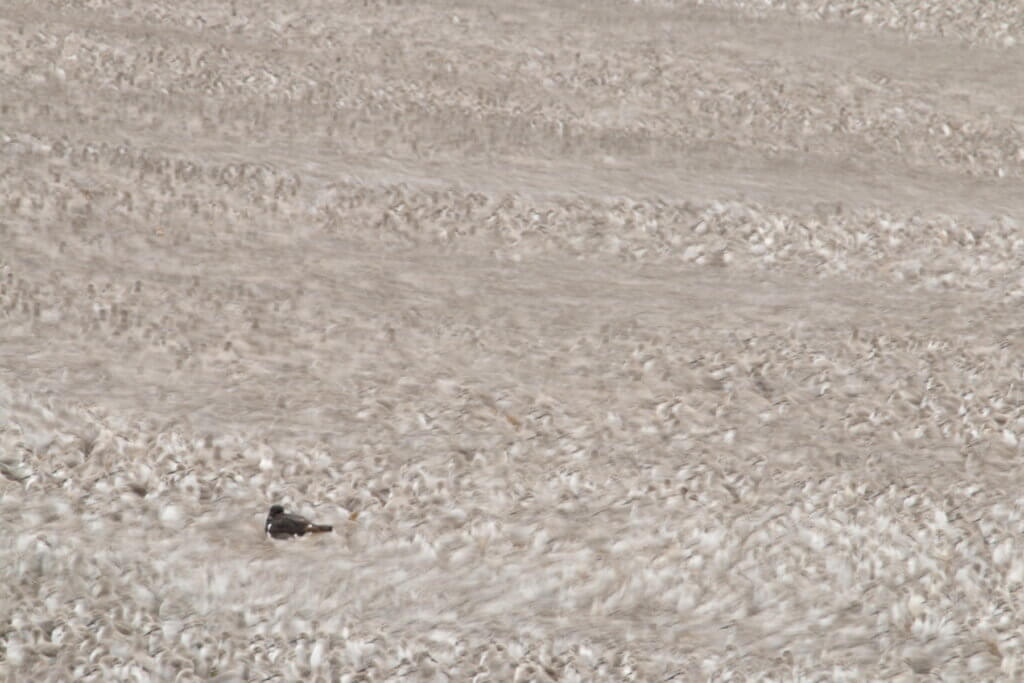
Guy writes: I recently went with friends to the hide tide roost at the RSPB Snettisham reserve. It has been many years since I had last been to see this spectacle, not such a high tide on that occasion, and found the whole experience quite mesmerising. The incoming North Sea had pushed tens of thousands of waders off The Wash estuary, and the birds moved onto the gravel banks of the adjacent pools on the reserve to await the ebb of the tide. The collective interaction of thousands of densely packed birds, with some stationary, others moving in unison or parting like the Red Sea for a passing oystercatcher, was spellbinding. There was a continual murmur from the flock as the birds seemed to be impatiently waiting to return to their estuarine feeding grounds. By using some longer exposures, I tried to convey this inherent sense of restlessness amongst the flock.
Amongst the swirling grey flock were a few birds with vestiges of their attractive brick red summer plumage. Whilst I have seen birds in breeding plumage on passage, I confess I would love to see these birds in all their splendour on their high Arctic circumpolar breeding grounds. Knot are long distance migrants, and two populations use The Wash. The birds that breed in Siberia (nominate race canutus) pass through on their way to wintering areas along the west coast of Africa. Birds that breed in Greenland (islandica) will winter here.
Many will be aware the scientific name of the knot links to the tale of King Canute, the 10th century Viking King of Norway, Denmark and England, who is famed to have set his throne on the beach and commanded the tide not to come in. In some versions of the story he did this to prove he was all powerful and could control the tides. Others recount an alternate version, where this was to show his people that even his royal powers could not manipulate the elements. As all knots of today are fully aware, the tide waits for no bird and places like Snettisham are vital safe havens, where undisturbed birds can conserve energy during harsh winter weather whilst their feeding grounds are temporarily covered by the sea.
With important wintering populations at a limited number of sites, knot are currently ‘amber’ listed on the ‘Birds of Conservation Concern 4: the population status of birds in the UK, Channel Islands and Isle of Man’. More worryingly, at a global level, some breeding populations have undergone significant declines. Its change in IUCN listing from ‘least concern’ in 2012 to its current ‘near-threatened’ status should be a klaxon warning to all of us. The climate crisis, which is increasingly being brought in to focus, may well hold a very uncertain and unwelcome future for this charismatic birds of our shores.
[registration_form]